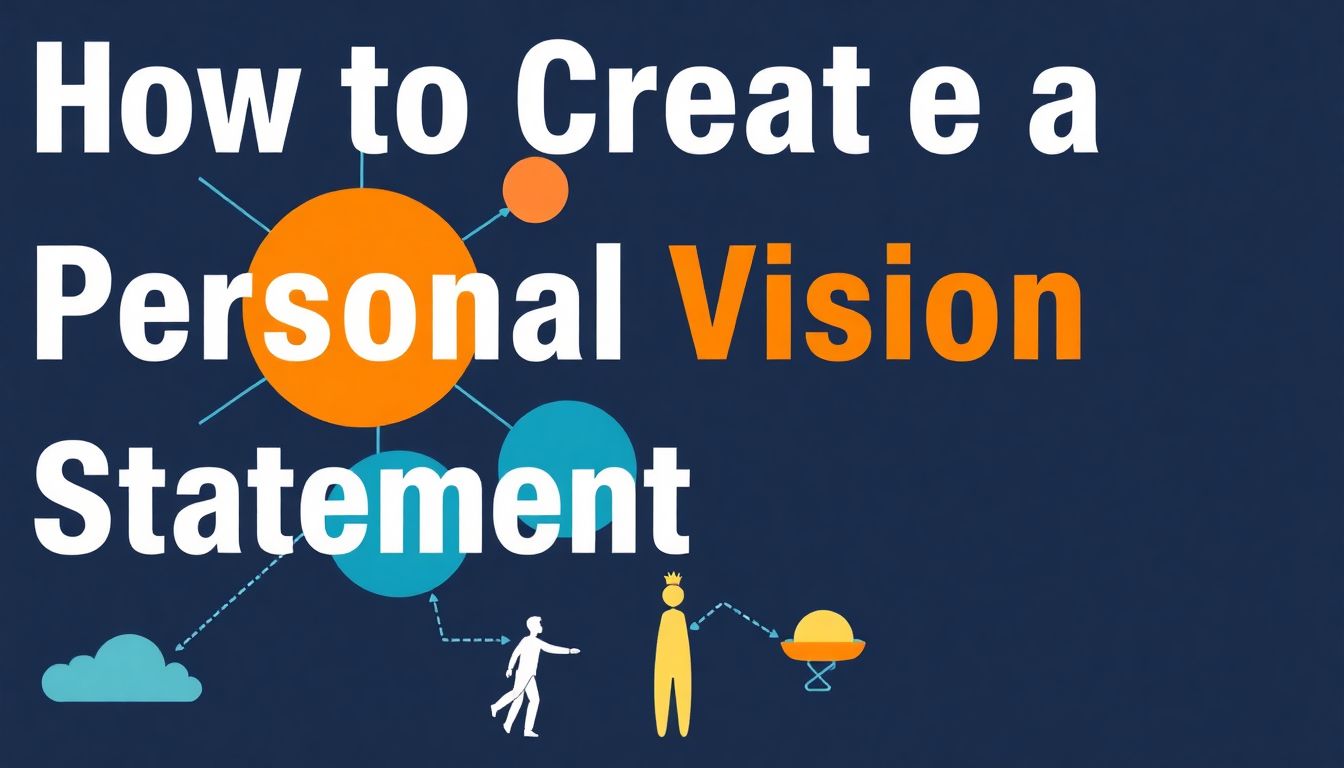Imagine having a clear, inspiring sentence that reminds you why you do what you do—one that helps you make decisions, set goals, and stay motivated when things get tough. That’s exactly what a personal vision statement can do for your career.
More than a motivational phrase, your vision statement is a powerful tool for self-awareness and alignment. It helps you connect your daily actions to a bigger purpose, making your professional journey more intentional and fulfilling.
Neste artigo, você vai aprender como criar uma personal vision statement que realmente reflita quem você é e aonde quer chegar.
What Is a Personal Vision Statement?
A personal vision statement is a short, meaningful sentence that describes what you want to contribute through your career, the kind of person you want to become, and the impact you hope to make.
Think of it as your professional “North Star.” It doesn’t just focus on your job title or achievements—it reflects your values, purpose, and long-term direction.
While mission statements often describe what you want to do, a vision statement is more about why and how you want to live and work.
Why You Need One
Having a personal vision statement can help you:
- Make career decisions with more clarity
- Stay motivated during challenges or transitions
- Align your work with your values and strengths
- Filter out distractions and focus on what matters
- Feel more connected to your purpose every day
It becomes a mental anchor that you can return to when you feel uncertain or overwhelmed.
Step 1: Reflect on Your Core Values
Your vision statement should be rooted in what truly matters to you.
Ask yourself:
- What principles do I want to live by?
- What do I want to be known for?
- What kind of contribution do I want to make?
Examples of values include creativity, freedom, service, learning, balance, leadership, or integrity. Choose the ones that feel non-negotiable for you.
Step 2: Identify Your Strengths and Passions
Next, think about what energizes you and what you naturally do well. Your vision should include the kind of work or contribution that feels fulfilling—not just impressive.
Ask:
- When do I feel most alive at work?
- What strengths do people often recognize in me?
- What kinds of tasks or projects light me up?
This helps your vision statement feel authentic—not forced.
Step 3: Define the Impact You Want to Make
Now, take it one step further: what kind of change do you want to create?
This could be big or small:
- Helping people grow or heal
- Solving complex problems
- Making things more beautiful or efficient
- Leading teams with empathy
- Creating safer, fairer environments
Your vision doesn’t have to change the whole world—but it should matter deeply to you.
Step 4: Imagine Your Ideal Career Life
Close your eyes and visualize yourself in 5 or 10 years. Not just what you’re doing—but how you feel.
Ask:
- Where am I working?
- How do I feel about my work?
- Who am I impacting?
- What kind of lifestyle have I built?
This exercise will help you form a picture of your future that goes beyond job titles and taps into emotion and meaning.
Step 5: Write Your Vision Statement
Now, combine the insights from all the steps into a short, clear sentence (or two). Aim for something that:
- Feels exciting and honest
- Speaks to your values, strengths, and impact
- Is specific enough to inspire action, but broad enough to grow with you
Example Personal Vision Statements:
- “To empower others through storytelling and help people connect to their deeper potential.”
- “To create thoughtful digital experiences that make people’s lives simpler and more joyful.”
- “To lead with empathy, build inclusive teams, and contribute to meaningful social change.”
- “To continuously learn and share knowledge in ways that inspire growth in others and myself.”
There’s no “perfect” format. What matters is that it feels true to you.
Step 6: Revisit and Refine Regularly
Your vision may evolve as you do. Revisit it every few months—or whenever you feel disconnected from your path. Ask:
- Does this still reflect who I am and what I want?
- Has anything shifted in my values or direction?
- Is there a clearer way to express it?
Allow your vision to grow with you. It’s not set in stone—it’s a living reminder of your journey.
Step 7: Use It to Guide Your Career
Once you’ve written your vision, put it where you’ll see it. Read it before job interviews, big decisions, or moments of doubt. Use it to:
- Choose roles and projects that align with your purpose
- Stay motivated during transitions
- Advocate for yourself with clarity and confidence
- Set goals that reflect your real ambitions—not external expectations
When your daily actions reflect your deeper vision, you stop just “working”—you start building a meaningful career.
You Deserve a Career That Feels Aligned
You don’t need to follow someone else’s version of success. Your career should reflect your values, your voice, and your vision. Creating a personal vision statement is one small—but powerful—step toward that kind of alignment.
So take the time. Listen to yourself. And write something that speaks directly to the future you want to create.
